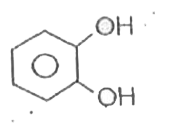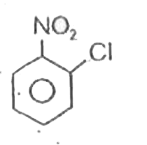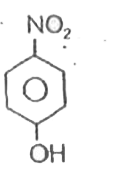For the given aqueous reactions, which of the statements(s) is ( are) true ? Excess
KI+K3[Fe(CN)6]diluteH3SO4−−−−−−−→ brownish yellow solution ZnSO4−−−→whiteppt+brownishyellowfi<rateoverset(Na_(2)S_(2)O_(3))(rarr) colourless solution
The first reaction is a redox reaction
White precipitate is Zn3[Fe(CN)6]2
Addition of filtration to starch solution gives blue colour
White precipitate is soluble in NaOH solution
The correct Answer is:A,C,D
Brownish yellow solution is K4[Fe(CN)6]
White ppt is K2Zn[Fe(CN)6] or
K2Zn3[Fe(CN)6]2& Brownish yellow filterate is I2.
Topper's Solved these Questions
- BOOK - NARAYNACHAPTER - HALOGEN COMPOUNDSEXERCISE - Comprehension type Questions (passage)8videos
HALOGEN COMPOUNDS
- BOOK - NARAYNACHAPTER - HALOGEN COMPOUNDSEXERCISE - Passage-II3videos
HALOGEN COMPOUNDS
- BOOK - NARAYNACHAPTER - HALOGEN COMPOUNDSEXERCISE - Level IV NCERT BASED QUESTIONS22videos
HALOGEN COMPOUNDS
- BOOK - NARAYNACHAPTER - HALOALKANE AND HALOARENESEXERCISE - EXERCISE - 459videos
HALOALKANE AND HALOARENES
- BOOK - NARAYNACHAPTER - METALLURGYEXERCISE - STATEMENT TYPE QUESTOINS20videos
METALLURGY
Similar Questions
Knowledge Check
- Question 1 - Select One or More
For the given aqueous reaction which of the statement (s) is (are) true ? Excess KI+K3[Fe(CN)6]DiluteH2SO4−−−−−−−→
Brownish-yellow solution↓ZnSO4
(White precipitate+Brownish-yellow filtrate)↓Na2S2O3Colourless solutionAThe first reaction is a redox reactionBWhite precipitate is Zn3[FE(CN)6]2CAddition of filtrate to starch solution gives blue colourDWhite precipitate is soluble in NaOH solution - Question 2 - Select One or More
For the given reactions, which of the following statements are true?
KI+K3(excess)[Fe(CN)6]dilute −−−→H2SO4darr Zn SO_4)(Brownishyellowsolution
white precipitate +Brownish yellow filtrate ↓Na2S2O4 colourless solutionAThe first reaction is a redox reaction.BWhite precipitate is of Zn3[Fe(CN)6]2CAddition of starch solution to filtrate gives blue colour.DWhite precipitate is soluble in NaOH solution. - Question 3 - Select One
HNO3/H2SO4−−−−−−−−→ANaOH−−−−−→433KB, B is
 A
A B
B C
C D
D
Na2S2O3 solution + X to white ppt. excess−−−−−−−−−→Na2S2O3solutionclear solution
View SolutionSiCl4H2O−−→(A)Heat−−→(B)Na2CO3−−−−→Heat(C),
The compound (C ) isView SolutionIn the following sequence in aqueous solution, the species X, Y and Z, respectively, are
S2O2−3Ag+−−→X(Clear solution)Ag+−−→Y(White ppt.)With time−−−−−→Z(Black ppt.)View SolutionA metal M and its compound can give the following observable changes in a consequence of reactions
Mdilute−−−−−→HNO3[Colourless Solutions]aqueous−−−−−−→NaOH[White Precipitate]excess−−−−−−→NaOH(aq)[Colourless Solutions]H2S−−→[White Precipitate]View SolutionFeCI3+K3[Fe(CN)6]+H2O2OH−−−→ Precipitate. The colour of the precipitate is:
View Solution

